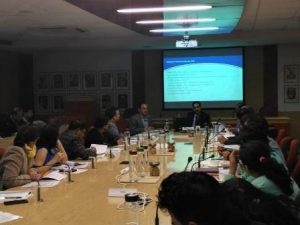Air Pollution sees over half of deaths in persons younger than 70, confirms ICMR
The Lancet report brought out by national and international scientists alarmingly states that Delhi has the highest annual population-weighted mean PM 2.5 in 2017 followed by other northern states of Uttar Pradesh, Bihar and Haryana.

Over half of 12.4 lakh deaths attributable to air pollution in 2017 were in persons younger than 70 years, says a new Lancet study. A substantial eight per cent of the total disease burden in India and 11 per cent of premature deaths in people younger than 70 years could be attributed to toxic air.
The India state-level study published in The Lancet Planetary Health goes on to state that India which accounts for 18 per cent of the global population has a disproportionately high 26 per cent of the global premature deaths and disease burden due to air pollution. “Less than 70 years of age is considered premature (death). Such estimates show that the impact of air pollution can be severe on the working population and therefore, needs to be considered prominently in policy issues as well,” Prof. Lalit Dandona, Public Health Foundation of India (PHFI) and Director, India State-Level Disease Burden Initiative, who was the senior author in the study, told Delhi Post.
Toxic air now contributes to more disease burden in India than tobacco use, primarily through causing lower respiratory infections, chronic obstructive lung disease, heart attacks, diabetes, stroke and lung cancer, pointed out Dr. S. Venkatesh, Director General of Health Services, Ministry of Health and Family Welfare, GOI.
Also read: Moving from Rhetoric to Action: Transforming Environmental Governance
The study titled ‘The Impact of air pollution on deaths, disease burden, and life expectancy across the states of India: the Global Burden of Disease Study 2017’ has been brought out by India State-Level Disease Burden Initiative which is a joint initiative of the Indian Council of Medical Research (ICMR), PHFI and Institute for Health Metrics and Evaluation (IHME) in collaboration with the Ministry of Health and Family Welfare, GOI. Over 100 experts and Indian institutions have been part of the research study that was initiated in October 2015.
“The upsurge in respiratory problems in the winter months with peak air pollution is well-known but what is now also becoming better understood is that it is a year-round phenomenon particularly in north India which causes health impacts far beyond the seasonal rise of respiratory illnesses,” said Prof. Randeep Guleria, Director, AIIMS.
“We will be producing estimates not only for air pollution but for diseases in general every year. This is part of a larger network. The idea is to provide the best estimates for all diseases and risk factors for every state on an on-going basis so that policy and decision-making can benefit from robust findings rather than guess work. We will produce updated findings next year as well,” Prof. Dandona told Delhi Post.
Previously, the India State-Level Disease Burden Initiative reported the overall trends of diseases, injuries, and risk factors as part of the Global Burden of Diseases, Injuries and Risk Factors Study (GBD) 2016 (1990-2016) and also detailed trends of some major non-communicable diseases and suicide.
Emphasising on improvement in data collection methods, Prof Dandona added, “Major findings are similar but incrementally, every year, we have better and refined estimates of some parameters. In this case, we have for air pollution.”
In fact, if the comprehensive estimates are anything to go by, then the average life expectancy in India would have been 1.7 years higher if the air pollution level were less than the minimal level causing health loss with the increase exceeding two years in the north Indian states of Rajasthan (2.5 years), Uttar Pradesh (2.2 years) and Haryana (2.1 years).
The Lancet report brought out by national and international scientists alarmingly states that Delhi has the highest annual population-weighted mean PM 2.5 in 2017 followed by other northern states of Uttar Pradesh, Bihar and Haryana.
Also read: Change is in the air
It states that 77 per cent of India’s population is exposed to outdoor air pollution levels above the National Ambient Air Quality Standards safe limit of 40 microgram per cubic meter (ug/m3). While Delhi accounted for 209.0 ug/m3, the annual population-weighted mean PM 2.5 was followed up by Uttar Pradesh, Bihar and Haryana in the range of 125.7 ug/m3 – 174.7 ug/m3.
The panel also pointed out that prospective cohort studies that have been initiated in India for studying the long-term health impact of air pollution on cardiovascular disease, respiratory disease, and birthweight are expected to provide further evidence on this topic in India.
On the need of multisectoral policies throughout the country for reducing substantial avoidable deaths and disease burden, the panel hailed the Government policies of National Clean Air Programme and the Pradhan Mantri Ujjwala Yojana. “Unauthorised burning is one of the factors causing pollution. As pointed out by scientists, there is a need to conduct public engagement exercises like the Green Good Deeds campaign launched by the Union Minister for Environment, Forest and Climate Change, Dr Harsh Vardhan, the National Clean Air Programme etc. In fact, it has come to my notice that people have been active on the Hawa Badlo App which has received more than 2,000 complaints since its launch (in the last week of October 2018). Such initiatives need to be enhanced,” Dr. Tushar K. Joshi, Advisor Environmental Health, Ministry of Environment, Forest and Climate Change, GOI, told Delhi Post.
